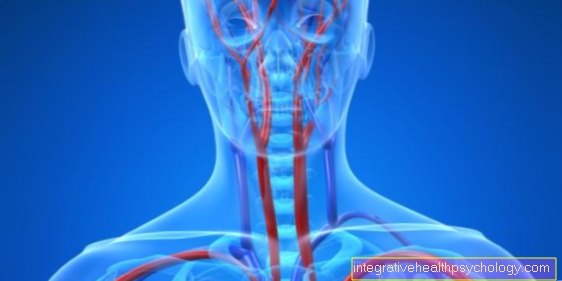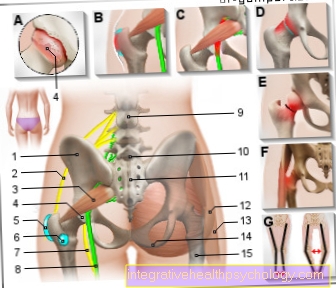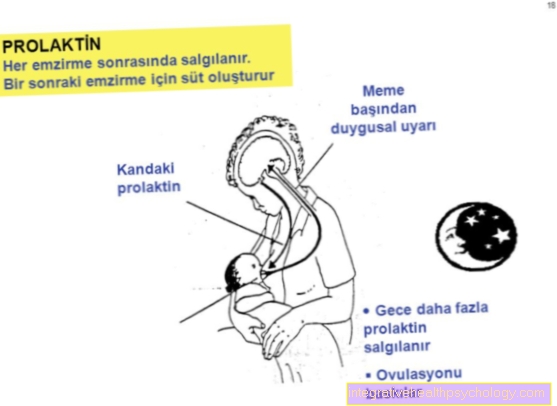Folic Acid Deficiency Anemia
What is Folic Acid Deficiency Anemia?
Folic acid is an important component in the production of DNA. It is involved in cell formation and the growth of human cells, especially the red blood cells are dependent on folic acid. A deficiency can lead to anemia and symptoms of the gastrointestinal tract.

The reasons
A deficiency in folic acid can result from an insufficient intake of vitamins, which results, for example, from a very one-sided diet. Furthermore, problems with the utilization of folic acid in the stomach or intestine can lead to a folic acid deficiency. This is the case, for example, with chronic intestinal diseases.
Furthermore, an increased need for folic acid, such as occurs during pregnancy or during growth, can lead to a deficiency of the vitamin.
For more information, read on: Causes of anemia.
The symptoms of folic acid deficiency anemia
A variety of symptoms can arise when folic acid is deficient. These include tiredness, exhaustion or a feeling of weakness. Difficulty concentrating can also show up. It can lead to gastrointestinal complaints in the context of anemia, which manifests itself as diarrhea or indigestion. Those affected may also suffer from headaches and dizziness.
Due to the anemia, the skin color and also the mucous membranes can appear very pale or sallow. Furthermore, heart palpitations or shortness of breath can occur. With its very pronounced form of folic acid anemia, rhythm disturbances of the heart can also occur.
Also read the article: Symptoms of anemia.
The diagnosis
If a folic acid deficiency is suspected, the doctor will usually take a blood sample. The laboratory values can be used to tell whether there is a deficiency. Typically, the appearance of the red blood cells in folic acid anemia changes. They are larger than usual and also more heavily colored. The coloring results from the loading with the red blood pigment hemoglobin. The medical professionals speak of a so-called when the above criteria are met Megaloblastic hyperchromic anemia.
The folic acid level in the blood can also be determined. As a rule, folic acid levels are above 2.5 ng / ml. Values below 2 ng / ml are referred to as deficiency.
Find out more about the topic here: Megaloblastic anemia.
This is what the blood count looks like
Folic acid is responsible for the proper formation of cells. If there is a deficiency, there are changes in the blood cells - especially the red blood cells and the erythrocytes are affected. They appear larger than usual and are increasingly loaded with red blood pigment (so-called hemoglobin). Not only is the size of the erythrocytes changed, but also the number. There are fewer erythrocytes because the body can no longer produce enough cells due to the shortage. The result is anemia, which is also known as anemia in technical terms. This is called especially in the case of a folic acid deficiency megaloblastic hyperchromic anemia.
In addition to the red blood cells, the blood platelets (thrombocytes) and the white blood cells (leukocytes) can also be noticed by a decrease in the number of cells. They too are dependent on folic acid. Furthermore, if there is a deficiency, the amount of folic acid in the blood serum is reduced - the values then fall below 2 ng / ml.
Read more about the topic here: Folic acid.
The treatment
Treatment can be done with folic acid supplements. These can be purchased at the pharmacy and are best taken after consulting a doctor.
It may be advisable to take it before the start of pregnancy, especially if you want to have children, in order to supply the body with a sufficient amount of folic acid. This is needed to support the child's development, especially of the spinal cord and brain.
The intake of folic acid can also be increased through certain foods, whether this is sufficient, but should be discussed with the treating doctor if there is a deficiency. Foods that are rich in folic acid include; green vegetables like spinach, avocado or asparagus. Tomatoes, soybeans and peas, whole grain products, white bran and egg yolks are also among the folic acid suppliers.
Read more on the subject at: Foods with folic acid
The duration
The duration of folic acid anemia depends largely on the treatment. Therapy, e.g. with a folic acid preparation, usually improves the values again after a while. You can check this with blood tests.
The prognosis for folic acid anemia is usually relatively good. Most people can benefit from taking a folic acid supplement and will no longer be affected by a deficiency symptom after a few weeks to months. Of course, there may be deviations in terms of the prognosis and the duration of treatment if there are other existing severe or chronic diseases.
Find out more about the topic here: Anemia due to chronic diseases.
The course of the disease
If there is a deficiency in folic acid, the red blood cells in particular suffer. Anemia develops, which can be associated with various complaints. With a very pronounced form of anemia, these can also lead to shortness of breath or cardiac arrhythmias.
The symptoms and anemia can be countered through therapy. Most people can stabilize their levels by taking folic acid. After just a few weeks or months, many of those affected are free of symptoms and the folic acid levels are back in the normal range.
Find out more about the topic here: The consequences of anemia.





























